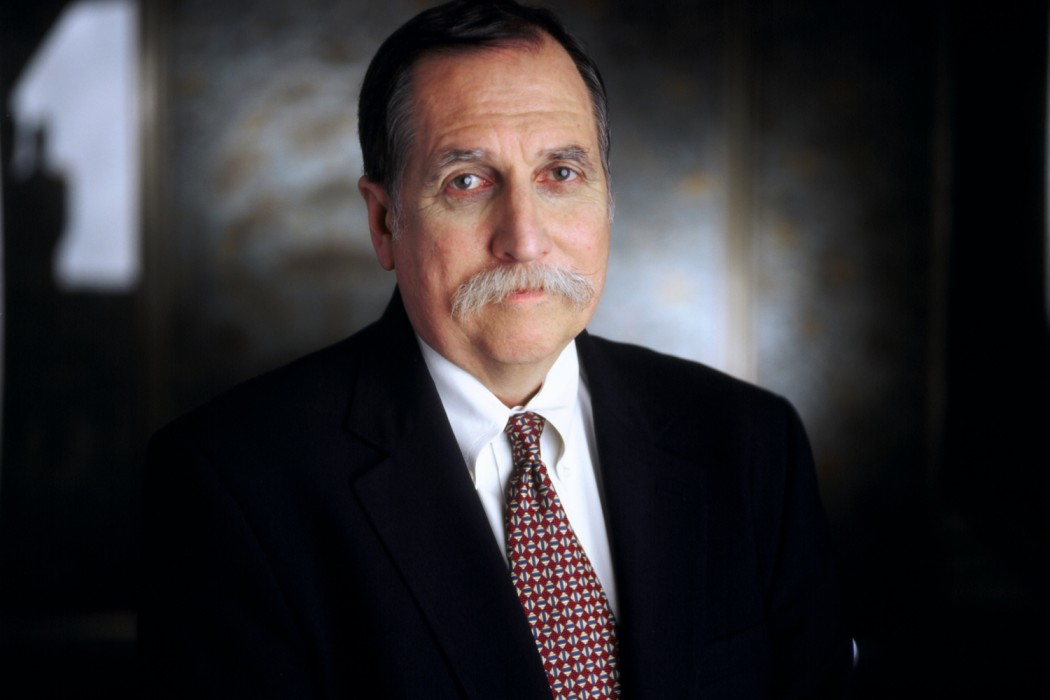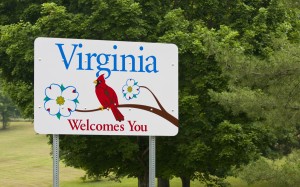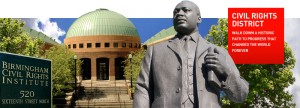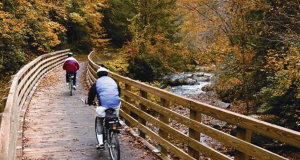This Guest Article for REVITALIZATION was written by Edward T. McMahon, Senior Resident Fellow, Urban Land Institute in Washington, DC.
Where did you go on your last vacation? Was it rewarding and satisfying? Would you recommend it to a friend? Did the destination meet your expectations? Or were you disappointed? Did traffic congestion, dirty air, crowded beaches, slipshod service or excessive commercialism leave you feeling frustrated and cheated?
Tourism is big business. Americans spend more than $800 billion a year on travel and recreational pursuits away from home. Tourism is one of the three largest industries in every American state and a critical factor in the world economy.
However, tourism is also a doubled edged sword. On the one hand, it provides communities with many benefits: new jobs, an expanded tax base, enhanced infrastructure, improved facilities and an expanded market for local products, art and handicrafts. In short, it can be an important tool for community revitalization.
On the other hand, it can create problems and burdens for local communities, such as crowding, traffic congestion, noise, increased crime, haphazard development, cost-of-living increases and degraded resources. Michael Kelly, former Chairman of the American Planning Association’s, Tourism Planning Division says “The impacts of tourism on a community can be beneficial if planned and managed or extremely damaging if left without controls.”
So the question is: how do you maximize the benefits of tourism, while minimizing the problems? First, communities need to recognize the difference between mass market tourism and sustainable tourism. Mass market tourism is all about “heads in beds.” It is high volume, high impact, but low yield. A classic example is Ft. Lauderdale, Florida.
When, I was in college, Fort Lauderdale, Florida was the “spring break capital” of America. City officials thought it was a great idea to invite millions of college kids to come down for a few weeks each year. What they didn’t count on, of course, was that the college kids would sleep six to eight per room; the only thing they would spend money on was beer. The city had to hire all kinds of extra police and clean-up crews and pretty soon Fort Lauderdale had a reputation as an “out-of-control town full of drunken college kids.” Then, Fort Lauderdale decided to change direction.
Today, Fort Lauderdale is no longer the spring break capital. It may not have as many tourists as it used to, but the tourists who do come are older and more affluent. They sleep two people to a room. They dine at fancy restaurants and shop in high-end stores. The city doesn’t need to hire extra police and clean- up crews. Sustainable tourism is lower volume, lower impact, but higher yield.
To understand mass market tourism, think about mega hotels, theme parks, chain stores and the new generation of enormous (4000 to 5000 passenger) cruise ships. Mass market tourism is about quantity. Mass market tourism is also about environments that are artificial, homogenized, generic and formulaic. In contrast, sustainable tourism is about quality. Its focus is places that are authentic, specialized, unique and home grown. To understand sustainable tourism, think about unspoiled scenery, locally-owned businesses, historic small towns and walkable urban neighborhoods.
State and local tourism agencies spend millions of dollars each year on tourism marketing and promotion. Marketing is important because it helps to create demand. It promotes visitation. It identifies and segments potential visitors and it provides information about a community and its attractions.
Yet, tourism involves a lot more than marketing. It also involves making destinations more appealing. This means identifying, preserving, enhancing and/or restoring a community’s natural and cultural assets, in other words, protecting its heritage and environment. It is after all, the unique architecture, culture, wildlife or natural beauty of a community or region that attracts tourists in the first place.
In today’s global marketplace, competition for tourism dollars is fierce. If the destination is too crowded, too commercial or too much like every other place, then why go? The best marketing a community can have is word of mouth. This occurs when the reality of the place meets or exceeds the mental image that visitors have been sold through marketing and promotion. Creation of a false image can spoil a vacation. What’s more it can reduce repeat visitation. Tourists may come once, but they won’t come back.
The truth is, the more any community comes to look and feel just like everyplace else, the less reason there is to visit. On the other hand, the more a community does to enhance its uniqueness, the more people will want to visit. Unfortunately, the world is becoming rapidly homogenized. This is one reason why local land use planning, historic restoration and urban design standards are so important.
To attract and retain tourists, local officials need to become much more aware of the overall character of their community. This is because there are significant differences between resident and tourist perceptions of a community. Tourists are open and receptive to everything they see, while longtime residents tend to tune out the familiar environments along the roads they travel day in and day out.
So how can a community attract tourists and their dollars without losing their soul? Here are some recommendations:
Preserve and restore historic buildings, neighborhoods and landscapes. A city without a past is like a man without a memory. Preserving historic buildings is important because they are the physical manifestations of our past. They tell us who we are and where we came from. Saving the historic buildings and landscapes of a city is about saving the heart and soul of the city. It is also about economic competitiveness. Travel writer Arthur Frommer put it this way: “Among cities with no particular recreational appeal, those that have preserved their past continue to enjoy tourism. Those that haven’t receive almost no tourism at all. Tourism simply won’t go to a city or town that has lost its soul.”
Try to imagine, Alexandria, Virginia without its Old Town, New Orleans without the French Quarter or Seattle without the Pike Place Market. These communities would be lesser places, but they would also be diminished as tourism destinations.
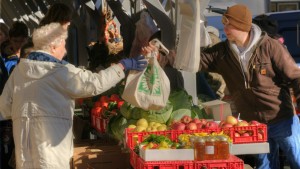
Shoppers at Seattle’s Pike Place Market
Preservation minded communities like Charleston, Savannah, Santa Fe, Key West and Quebec City are among North America’s leading tourism destinations precisely because they have protected their unique architectural heritage. By contrast cities that have obliterated their past attract few tourists or their dollars.
Focus on the authentic. Communities should make every effort to preserve the authentic aspects of local heritage and culture, including food, art, music, handicrafts, architecture, landscape and traditions. Sustainable tourism emphasizes the real over the artificial. It recognizes that the true story of a place is worth telling, even if it is painful or disturbing.
For example, in Birmingham, Alabama, where I grew up, the Civil Rights Museum and the Historic District tell the story of the city’s turbulent history during the civil rights era. This authentic representation of the city’s past adds value and appeal to Birmingham as a destination and the museum and surrounding historic district have proved popular with visitors from all over the world.
In Virginia, the Crooked Road Heritage Music Trail is a great example of an authentic attraction rooted in Virginia tradition. The driving route along US 58 connects major heritage music venues in Southwest Virginia and it showcases the traditional gospel, bluegrass and mountain music indigenous to the region. Annual festivals, weekly concerts, live radio shows and informal jam sessions abound throughout the region and these events attract locals and tourists alike.
Ensure that tourism support facilities are compatible with their surroundings. Tourists need places to eat and sleep. They also appreciate the dependable levels of service and accommodation usually found in American hotels and motels. But tourists, wherever they go, also crave integrity of place – and homogenous, “off-the-shelf” corporate chain and franchise architecture works against integrity of place and reduces a community’s appeal as a tourist destination.
Design is, of course, critically important for communities trying to compete in the tourism marketplace. Tourism is the sum total of the travel experience. It is not just what happens at a museum or a festival. It is also about the places that tourists eat and sleep; the roads they drive down, the main streets they shop on and so forth.
Communities need to ask this question: Do you want the character of your community or region to shape new development? Or, do you want new development to shape the character of your community? Put another way, shouldn’t buildings in one region of the country or the world be different from those in other regions?
Bob Gibbs, one of the nation’s leading real estate market analysts says that “When a chain store or hotel developer comes to town they generally have three designs (A, B and C) ranging from Anywhere USA to Unique (sensitive to local character). Which one gets built depends heavily upon how much push back the company gets from local residents and officials about design and its importance.
One example of a chain hotel that fits-in with a historic community is the Hampton Inn in Lexington, Virginia. Instead of building a generic chain hotel out by the interstate, the owners of the Lexington Hampton Inn converted an 1827 manor house – the Col Alto Mansion into the centerpiece of a 76 room hotel within walking distance of historic downtown Lexington. The McDonald’s in Freeport, Maine and the Marriott Fairfield Inn in Keene, New Hampshire are other examples of chains in restored historic buildings.
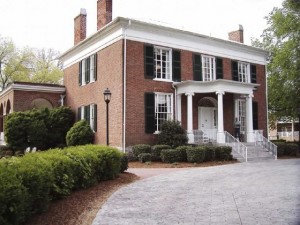
Hampton Inn in Lexington, Virginia
In some cases historic hotels can be the centerpiece of downtown revitalization efforts. The Mission Inn in Riverside, California, the Martha Washington Hotel in Abingdon, Virginia and the Peabody Hotel in downtown Memphis are three examples.
Every new development should have a harmonious relationship with its setting. Tourism support facilities should reflect the broader environmental context of the community and should respect the specific size, character and functional factors of their site within the surrounding landscape. A community’s food and lodging facilities are part of the total tourism package. Hotels should reflect a city and not each other. Hotels in Mississippi for example, should be different from those in Maine, Missouri, Montana, Malaysia or Morocco.
Interpret the resource. Education and interpretation are another key to sustainable tourism. Visitors want information about what they are seeing and interpretation can be a powerful story telling tool that can make an exhibit, an attraction, even an entire community come alive. It can also result in better-managed resources by explaining why they are important. Interpretation instills respect and fosters stewardship. Education about natural and cultural resources can instill community pride and strengthen sense of place.
Gettysburg, Pennsylvania developed a community-wide interpretation program that involves public art, wayside exhibits and interpretive markers that tell the story of the town and its role in the battle of Gettysburg, They did this, after they realized that most tourists were driving around the national park and then leaving town without realizing that the town itself was a big part of the story. Since the interpretative program was completed the number of visitors spending time and money in downtown Gettysburg had measurably increased.
The City of Richmond is another community that has done a great job of telling its story. The Richmond Slave Trail, for example, is a walking trail that chronicles the trade of enslaved Africans from Africa to Virginia until 1775 and away from Virginia until 1865. There are numerous historic markers along the route that explain the various sites and cast new light on a dark chapter of US history.
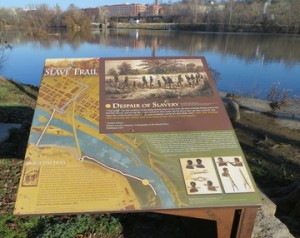
Interpretive marker along the James River in downtown Richmond
Protect Community Gateways. First impressions matter. Just like with meeting a person, a good first impression is important and a bad first impression is hard to change. Some communities pay attention to their gateways. Other do not. Many communities have gotten used to ugliness, accepting it as inevitable to progress. More enlightened communities recognize that community apearance is important. It affects a community’s image and its economic well being. I’ll never forget how charmed I was on my first visit to New Market, Virgina – a Norman Rockwell sort of town in the Shenadoah Valley. Nor will I forget how disapointed I was on a later visit to find giant fast food and gas stations signs towering over the town’s historic buildings, obliterating the scenery and diminishing the town’s appeal as a tourist destination.
Downtown is the heart of most American communities, but the commercial corridors leading to downtown are the front door. Corridor enhancements are critical to making a good first impression. Commercial corridors are also one of America’s best redevelopment opportunities. Arlington County, Virginia for example, has used a form based code to incentivize redevelopment along Columbia Pike. Unsightly auto-oriented development is now being replaced by walkable, mixed use development. Other communities like Carmel, Indiana and Cathedral City, California use corridor overlays to improve the character of new development along entry corridors.
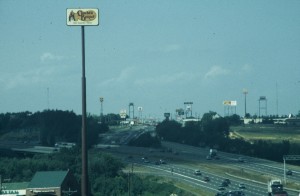
Signs along an interstate advertising to airplanes, rather than people.
Protecting scenic views and vistas, planting street trees, landscaping parking lots all make economic sense, but controlling outdoor signs is probably the most important step a community can take to make an immediate visible improvement in its physical environment. This is because almost nothing will destroy the distinctive character of a community faster than uncontrolled signs and billboards. Sign clutter is ugly, ineffective and expensive. When the streetscape becomes overloaded with signs, the cumulative effect is negative. The viewer actually sees less not more. Almost all of America’s premier tourist destinations have strong sign ordinances because they understand that attractive communities attract more business than ugly ones.
Enhance the journey as well as the destination. As previously mentioned, tourism is the sum total of the travel experience. It is not just what happens at the destination. It involves everything that people see and do from the time they leave home until the trip is over. Getting there can be half the fun, but frequently it is not.
There are many great destinations in America; however, there are very few great journeys left. Except for a few special roads, like the Blue Ridge Parkway, or the Natchez Trace driving along a typical American highway can be a profoundly depressing experience. Former author and TV commentator, Charles Kuralt put it this way: “Thanks to the Interstate Highway System it is now possible to drive across the country from coast to coast without seeing anything”. This is why it is in the interest of state and local officials to encourage development of scenic byways, heritage corridors, bike paths, rail trails, and greenways.
Get Tourists Out of Their Cars. If you design a community around cars, you’ll get more cars, but if you design a community around people you’ll get more pedestrians. Walkability is very good for business. In fact, it is hard to spend money when you are in a car, so getting people out of cars is a key to sustainable tourism and increased business. The best way to get people out of the car is to create places where people can walk or bike.
Link Sites Together. The Katy Trail in Missouri is considered one of the best rail trails in the country. It runs 240 miles from Machens, Missouri, near St.Louis, to Clinton, Missouri. It has brought thousands of tourists and new life to an economically distressed part of the state. Similarly, the Journey through Hallowed Ground Heritage Area along US 15 in Maryland and Virginia has provided a framework for promoting and interpreting nine presidential homes , numerous Civil War sites, more than 30 historic Main Street communities and numerous other historic and natural attractions. Few rural communities can successfully attract out-of-state or international visitors on their own, but linked with other communities they can become a coherent and powerful attraction.
Recognize that tourism has limits and must be managed. Saavy communities always ask how many tourists are too many. Tourism development that exceeds the carrying capacity of an ecosystem or that fails to respect a community’s sense of place will result in resentment by local residents and the eventual destruction of the very attributes that attracted tourists in the first place. Too many cars, tour buses, condominiums or people can overwhelm a community and harm fragile resources.
Sustainable tourism requires planning and management. Annapolis, Maryland, Charleston, South Carolina and Williamsburg, Virginia are examples of communities with tourism management plans. In Charleston, for example, the City prohibits large tour buses in the neighborhood South of Broad Street, known as the Battery. It also directs travelers to the city’s visitor center, which is located well away from historic residential neighborhoods that were being overrun by tourists. It has also built new attractions, like the South Carolina Aquarium, in under-served areas of the city, instead of concentrating everything in one or two overcrowded neighborhoods.
Summary. In recent years, American tourism has had steadily less to do with America and more to do with mass marketing. As farms, forests and open lands decrease, advertising dollars increase. As historic buildings disappear, chain stores proliferate. As main streets come back to life, congested commercial corridors spread on the outskirts of our towns. Unless the tourism industry thinks it can continue to sell trips to communities clogged with traffic, look-a-like motels, overcrowded beaches and cluttered commercial strips, it needs to create a plan to preserve the natural, cultural and scenic resources upon which it relies.
Tourism is about more than marketing. It is also about protecting and enhancing the product we are trying to promote. Citizens, elected officials and developers alike can take a leadership role in creating a sustainable tourism agenda that will strengthen the national and state economies, while at the same time preserving the natural and cultural assets that make it unique.
This oldie-but-goodie Guest Article was originally published in the June 15, 2015 issue of REVITALIZATION.

